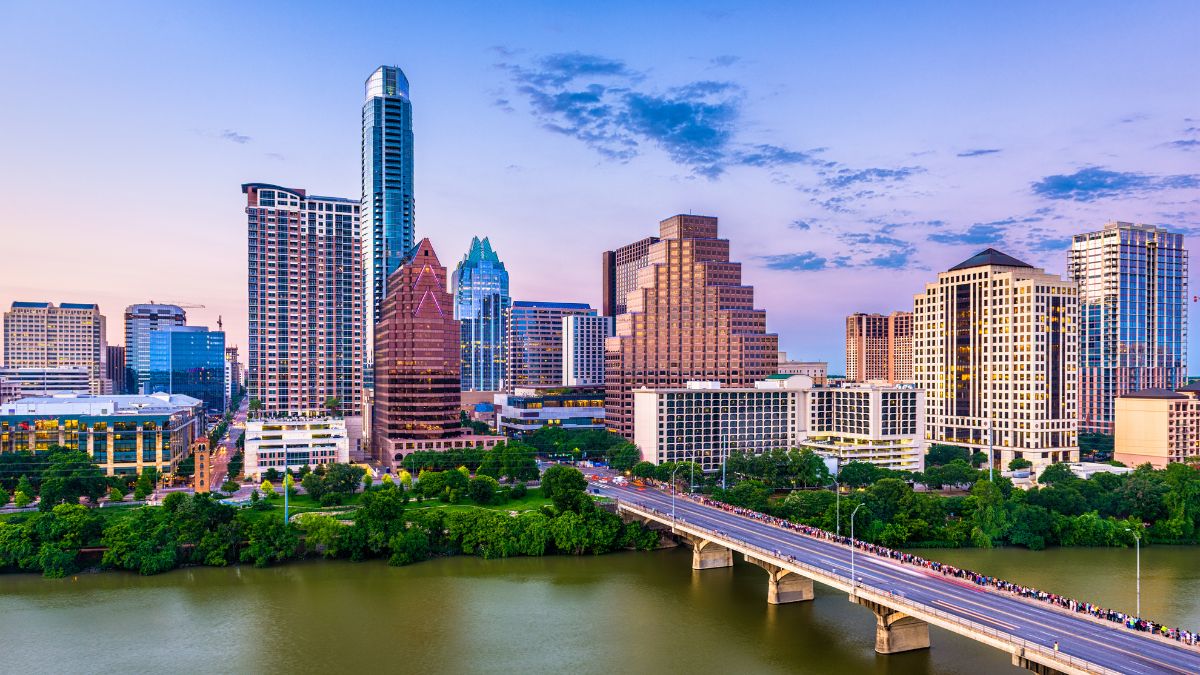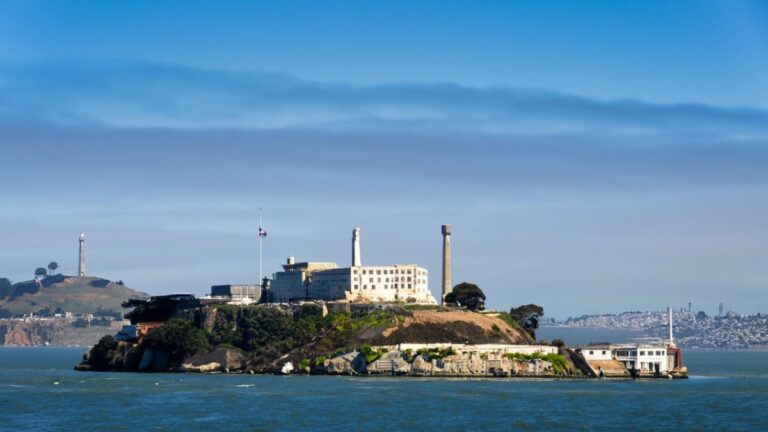Worst Time to Visit Texas: Dodging Extreme Heat and Hurricane Seasons

As participants in Amazon Associates and other programs, we earn from qualifying purchases. This comes at no additional cost to you. For more details, see our Affiliate Disclosure.
Texas, the Lone Star State, boasts a rich history, diverse landscapes, and an array of cultural experiences. However, like any vast territory, it has its share of extreme weather. For those looking to visit and make the most of their stay, it’s essential to be aware of the state’s less hospitable periods. This article sheds light on the worst times to visit Texas, helping travelers dodge the scorching heat and turbulent hurricane seasons.
HIGHLIGHTS
- Texas experiences extreme heat during the summer months, with central and southern regions, including Dallas, Austin, and Houston, facing the most intense temperatures.
- The Texas Gulf Coast, from Brownsville to Beaumont, is most vulnerable to hurricanes, especially between June and November.
- Flash floods and unexpected cold snaps can disrupt travel plans, with attractions like the Hamilton Pool Preserve near Austin sometimes closing due to safety concerns.
- The best times to visit Texas without facing extreme weather are during the spring, fall, and early winter months, offering mild temperatures and rich cultural experiences.
Understanding Texas’s Climate Zones
Spanning over 268,000 square miles, Texas is a vast state with a diverse range of climates. Its sheer size means that weather can vary dramatically from one region to another. To fully appreciate the complexities of Texas’s weather patterns and make an informed decision about when to visit, it’s essential to understand its distinct climate zones:
Gulf Coastal Plains: Stretching along the Gulf of Mexico, this zone has a humid subtropical climate. Summers are hot and humid, and it’s the region most affected by hurricanes and tropical storms. Winters are generally mild with occasional cold spells.
Interior Lowlands: This region, which includes cities like Austin and Dallas, experiences a more temperate climate. Summers can be very hot, but humidity is typically lower than on the coast. Winters can range from mild to cold, with occasional freezing temperatures and ice storms.
Great Plains: Extending from the central part of the state to the Panhandle, this area witnesses a semi-arid climate. Expect hot summers with cooler evenings and cold winters, often with snow in the northernmost parts. This region is also susceptible to tornadoes, especially in spring.
Basin and Range Province: Located in the far western part of Texas, including areas like El Paso, this desert region is characterized by hot summers and mild winters. Rainfall is sparse, and the landscape is punctuated by mountain ranges and desert valleys.
In conclusion, Texas’s diverse climate zones mean that the state sees a wide range of weather conditions throughout the year. By familiarizing yourself with these zones, you can better plan your visit, ensuring a comfortable and enjoyable experience.
Scorching Summers: The Heatwaves of Texas
Texas’s summer reputation precedes it, with temperatures often soaring well into the triple digits. The state’s central and southern regions, encompassing cities like Dallas, Austin, and Houston, bear the brunt of this heat, recording consecutive days of extreme temperatures during the peak of summer.
The intensity of Texas’s heatwaves can be attributed to several factors. Its geographical position near the Tropic of Cancer plays a part, allowing for prolonged intense sunlight. Moreover, high-pressure systems frequently settle over the state, trapping heat and preventing the formation of cooling clouds.
Such persistent high temperatures inevitably impact daily life. The state’s power grid can become overwhelmed, leading to potential brownouts or blackouts. Additionally, drought conditions might intensify, sometimes resulting in enforced water restrictions. The searing heat also means that outdoor activities are often limited to the cooler hours of early morning or late evening, especially to protect vulnerable populations like the elderly.
Despite the challenges, there’s a unique beauty to Texas summers. The clear skies deliver breathtaking starry nights, and the warm evenings become perfect for social gatherings, from backyard barbecues to poolside lounging. However, it’s essential to stay hydrated, wear appropriate clothing, and seek shade or air conditioning whenever possible to stay safe.
While the heat is undeniably intense, those prepared for it can still find plenty of joy in a Texan summer. But for visitors averse to such high temperatures, considering a trip during Texas’s cooler months might be a wise choice.
Hurricane Season: When and Where to Be Wary
Texas, with its extensive coastline along the Gulf of Mexico, is no stranger to hurricanes. These massive storm systems, born over warm ocean waters, can bring intense winds, heavy rainfall, and even spawn tornadoes. Knowing when and where these storms are most likely to strike is crucial for anyone planning a trip to the Lone Star State.
The hurricane season in Texas typically runs from June 1 to November 30, with the peak activity occurring between August and September. However, it’s worth noting that hurricanes can and have occurred outside these months; nature doesn’t always adhere to our calendars.
The Texas Gulf Coast, spanning areas from Brownsville to Beaumont, is the most vulnerable to these storms. Cities like Corpus Christi, Galveston, and Houston have historically borne the brunt of major hurricane impacts. But the effects of a powerful hurricane can be felt far inland, causing flooding and wind damage several hundred miles from the coast.
The intensity and trajectory of each hurricane are unique, so staying updated with the latest weather forecasts and warnings is essential, especially if traveling during the hurricane season. Modern forecasting has made it possible to predict the path of a hurricane with increasing accuracy, allowing for timely evacuations and preparations.
If you find yourself in Texas during hurricane season, always have a plan. Know the evacuation routes, have emergency supplies on hand, and stay informed. While the Gulf Coast’s beauty is undeniable and can be enjoyed even during this season, it’s essential to prioritize safety and awareness.
Impact of Extreme Weather on Tourist Attractions
Texas, a state celebrated for its diverse tourist attractions, can sometimes see these same spots affected by its equally varied extreme weather conditions. Whether it’s the scorching summer heat, the potent hurricane seasons, unexpected flash floods, or the occasional icy winter days, understanding the potential impact on key attractions ensures a smoother, more enjoyable travel experience.
- Heatwaves: Outdoor attractions, such as the San Antonio River Walk or Big Bend National Park, can become uncomfortable during peak summer heat, potentially forcing visitors to alter their plans to cooler parts of the day.
- Hurricanes: Predominantly impacting the Gulf Coast, hurricanes can lead to temporary closures of key sites like the Alamo or the Space Center Houston. Additionally, beach destinations might experience erosion, affecting their overall appeal.
- Flash Floods: Sudden, heavy rainfalls can cause attractions in low-lying areas, like the Hamilton Pool Preserve near Austin, to close unexpectedly due to safety concerns.
- Snow and Ice: Northern and western Texas can occasionally experience wintry conditions. While they might present picturesque landscapes, they can also result in road closures, limiting access to places like Palo Duro Canyon or the Guadalupe Mountains.
By staying informed and adaptable, travelers can navigate Texas’s extreme weather patterns and still relish the state’s rich offering of attractions.
Staying Safe: Tips for Traveling During Unpredictable Weather
Texas’s vast landscape and varied climate mean that visitors can sometimes face unpredictable weather patterns. From the sweltering heat of its summers to the sudden storms along the Gulf Coast, knowing how to navigate these conditions is paramount. Here are some essential tips for staying safe while exploring the Lone Star State amid its unpredictable climate:
- Stay Informed: Regularly check local weather forecasts, especially if you plan to visit areas known for sudden weather changes. Apps like the National Weather Service or local news outlets provide accurate, up-to-date information.
- Dress Appropriately: For scorching temperatures, wear lightweight, light-colored clothing, wide-brimmed hats, and sunscreen. In colder climates or during winter months, layer up and ensure you have a jacket or coat to keep warm.
- Hydrate and Rest: In high temperatures, drink plenty of water to stay hydrated. Take breaks in shaded or air-conditioned areas when exploring outdoors during peak heat.
- Know the Signs: Recognize the symptoms of heat exhaustion or hypothermia, depending on the climate. Listen to your body and seek medical attention if you feel unwell.
- Avoid Floodwaters: Flash floods can occur rapidly, especially in certain parts of Texas. Never attempt to walk or drive through floodwaters, even if they seem shallow.
- Plan Evacuation Routes: If you’re visiting coastal areas during hurricane season, familiarize yourself with local evacuation routes and have a contingency plan in place.
- Travel with an Emergency Kit: Equip your vehicle or backpack with essential items like water, non-perishable food, a flashlight, batteries, a first-aid kit, and any necessary medications.
- Stay Connected: Ensure your phone is charged and consider investing in a portable charger. It’s crucial to stay connected and reachable, especially during severe weather conditions.
Texas offers an array of experiences, and with a bit of preparation and awareness, visitors can safely enjoy all that this vast state has to offer, regardless of its unpredictable weather.
Alternatives: Best Times to Experience Texas Without the Extreme Weather
Texas is a diverse state, both in its attractions and its weather patterns. While certain seasons bring extreme conditions that might affect travel plans, there are also periods when the climate is more moderate, offering an ideal opportunity for visitors. Here’s a guide to the best times to experience Texas without facing its more challenging weather extremes:
Spring (March to May)
Spring is arguably one of the best times to visit Texas. The temperatures are mild, wildflowers (especially the iconic bluebonnets) bloom in abundance, and outdoor activities are enjoyable. Popular events like the Houston Livestock Show and Rodeo or Austin’s South by Southwest Festival also take place during this period.
Fall (October to November)
Just like spring, the fall season offers mild temperatures and fewer crowds. The changing foliage, particularly in the Texas Hill Country, offers a scenic backdrop for travelers. Events such as the State Fair of Texas in Dallas and various harvest festivals make it an enticing time to visit.
Early Winter (December to early January)
Before the potential for colder winter snaps, early winter in Texas is generally mild and enjoyable. Many cities, from San Antonio’s River Walk to Galveston’s Historic Strand, illuminate with festive lights, making it a magical time to explore.
Coastal Visits (April to May, October to November)
If the beach is on your agenda, late spring and early fall are ideal for coastal visits. The weather is pleasant, and the risk of hurricanes is reduced. Places like Corpus Christi, Galveston, and South Padre Island offer a tranquil experience during these months.
While summer and late winter have their charm, they can also bring challenging conditions, such as extreme heat or unexpected cold snaps. However, by targeting the aforementioned periods, travelers can experience the best of Texas with minimal weather-related disruptions, ensuring a memorable and comfortable stay in the Lone Star State.






